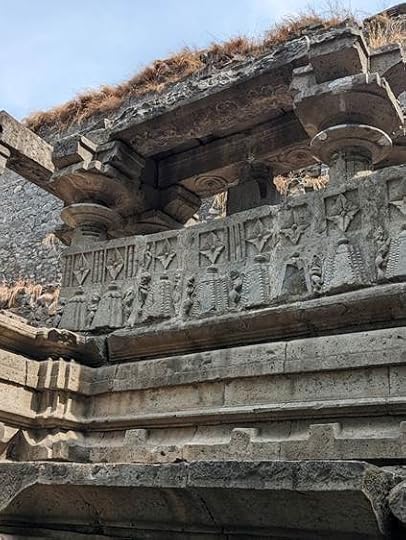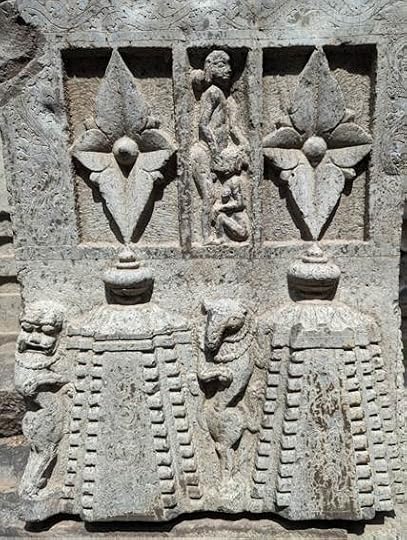Solapur and my first Sanskrit Poem
Like a roadrunner, I tend to ravage the dusty landscape of Deccan every week spent at home in Hyderabad and since I moved to the US, this meant doing so with much vigour and careless passion. And most recently I found myself perched inside the Solapur fort, situated only some three hundred kilometres from my city, and a site of severe political contestation in the medieval centuries: between the Yadavas, the Tughlaqs, the Sultanates of Bahmani, Adil Shahi, and Qutb Shahi, and the rulers of Vijayanagara and finally the Marathas. Richard Eaton and Philip Wagoner feature this “contested site” in their book – one of my favourites – Power, Memory, and Architecture. Due to the silence on the temple and the mosque in epigraphy and literature, they cannot do much but conjecture perhaps that a resistance by a monarch may have pushed perhaps Malik Kafur in the early decades of the 14th century to transform a Yadava-era (13th century?) schist temple into a mosque that neighbours it. They identify that only some fifteen pillars’ shorter shafts are missing in the desecrated temple, and in fact precisely these shafts become pillars to the mosque that oversees the temple from a slightly higher plane. There is other borrowing visible too: not least the rather bare tiles with foliated rhombuses.


However, seated in the pit-like habitat of the temple, very austere for the unashamed indulgence of the Deccani-Karnataka idiom, I was moved once again as I always tend to be with the glamour of the Vesara. Celebrated for its sharp edges, as if a shining star when viewed from the above, the temple of this type bears miniatures of its towers often guarded by pouncing but truly dancing Yalis. And picturing this format as a goddess I composed the following verse in the Shardula Vikridita metre – the metre of the dancing tigers: one that is said to be appropriate in textbooks, to talk of warriors and lovers in sport, but seen often in the talk of ornamentation of the goddess of learning.
आकाशाम्बुधिमन्थने सुचरितम् यस्याः समुद्गच्छति
या तारा तद्भूमिस्पर्शनटने वात्स्यायनम् चुम्बति
यस्यां कृष्णशिलापि आत्मरुचिना शार्दूलविक्रीडिता
ताम् देवीम् नमनम् करोमि विधिना कर्णाटपर्याटने
ākāśāmbudhimanthane sucaritam yasyāḥ samudgacchati
yā tārā tadbhūmisparśanaṭane vātsyāyanam cumbati
yasyām kṛṣṇaśilāpi ātmarucinā śārdūlavikrīḍitā
tām devīm namanam karomi vidhinā karṇāṭaparyāṭane
By near-covenant I offer my prayers to that goddess
In every outing in the Karnata
– whose saga curdles in the churn of space-sea
that star which kisses Vātsyāyana in her earth-touching-dance,
and in whom even the mere black stone without parting from its own ways,
bears the dance of the tigers





